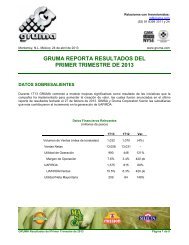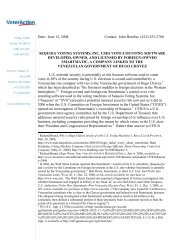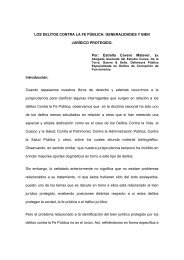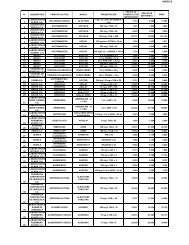broschuere ee zahlen en bf
broschuere ee zahlen en bf
broschuere ee zahlen en bf
Create successful ePaper yourself
Turn your PDF publications into a flip-book with our unique Google optimized e-Paper software.
2009<br />
Rural<br />
areas<br />
Persons using<br />
tradional biomass [mill.]<br />
Urban<br />
areas<br />
Total<br />
Rural<br />
areas<br />
Persons without access<br />
to electricity [mill.]<br />
Urban<br />
areas<br />
Africa 481 176 657 466 121 587<br />
Sub-Saharan Africa 477 176 653 465 120 585<br />
Developing Asia 1,694 243 1,937 716 82 799<br />
China 377 47 423 8 0 8<br />
India 765 90 855 380 23 404<br />
Rest of Asia 553 106 659 328 59 387<br />
Latin America 60 24 85 27 4 31<br />
Developing countries 1) 2,235 444 2,679 1,229 210 1,438<br />
World 2) 2,235 444 2,679 1,232 210 1,441<br />
1) Including Middle East<br />
2) Including OECD and transition economies<br />
Source: IEA [105]<br />
The proportion of <strong>en</strong>ergy forms g<strong>en</strong>erally described as r<strong>en</strong>ewable is particularly large in Africa.<br />
The main reason for this is the traditional use of biomass, though to a large ext<strong>en</strong>t this is<br />
not sustainable. Simple forms of cooking and heating result in harmful effects on health due<br />
to op<strong>en</strong> fires, and in many cases they cause irreversible deforestation.<br />
In the developing countries – especially in rural areas – some 2.7 billion people are dep<strong>en</strong>d<strong>en</strong>t<br />
<strong>en</strong>tirely on traditional biomass for cooking and heating; this corresponds to about 40 %<br />
of the world’s population. In view of the pace of population growth, the IEA expects this figure<br />
to increase to around 2.8 billion by the year 2030 [105].<br />
In some cases the use of hydropower from large dams is not a sustainable use of r<strong>en</strong>ewable<br />
<strong>en</strong>ergy either, since they sometimes have serious social and <strong>en</strong>vironm<strong>en</strong>tal impacts.<br />
WORLD: REgIONAL DIFFERENCES<br />
Total<br />
R<strong>en</strong>ewable Energy Sources in Figures<br />
89

















